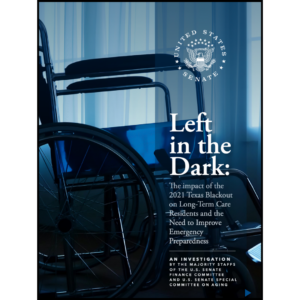Kitchen safety in long-term care
There is no doubt that the kitchen is one of the most dynamic areas in your LTC facility vulnerable to a fire or other mishaps. Think about it for a moment: You have several employees working quickly in a well-defined space during specific times when meals are being prepared. Open flames, steam and hot surfaces dot the environment.
Then look below your feet. Spills can make the floor as slippery as an ice rink. And sharp utensils always seem to be in someone’s hands.
So we’ve established that the kitchen can be a dangerous place, but it also serves a greater purpose (outside of creating wonderful meals for your residents). The kitchen is an area within your community to develop and utilize best practices in reducing hazards and responding to emergencies.
From a safety and risk perspective, the kitchen provides us with an immediate opportunity to develop a workforce that is “cultured” to prevent potential hazards and losses. The utilization of specific procedures and best practices for kitchen operations will help safeguard your employees from injuries and protect your organization from risk exposure as well as preventable claims.
Deviation from these procedures and best practices is usually when an incident occurs. As an example, if your policy states that kitchen floors must be mopped three times per day and all spills must be immediately cleaned up, it is essential for staff to comply with these guidelines to limit the potential for an adverse event.
In respect to fire prevention, staff must specifically follow procedures to ensure that required cooking temperatures are maintained, surfaces are cleaned and free of grease build-up, handles are turned inwards to avoid knocking over a pot or pan and all measures are taken to ensure that fire does not occur.
Dietary staff should receive appropriate training regimens on a continuous basis to reinforce safety and fire prevention principles in the kitchen. In addition to knowing how to eliminate hazards and causes, staff need to know how to respond to an emergency—particularly a fire. Most fires that occur in the kitchen involve Class B materials, otherwise known as flammable liquids. Typically, these substances include oils and grease used during the cooking process. When cooking operations are left unattended or equipment fails, a Class B fire can produce extreme flame temperatures and excessive amounts of smoke. That is why most kitchens are protected with a special fire suppression system underneath exhaust hoods.
Additionally, a special Class K (Kitchen) fire extinguisher is required in most kitchens to extinguish these types of unique fires. Staff must be trained on the proper methods of manually activating kitchen fire suppression systems as well as utilizing the Class K fire extinguisher during a fast-moving kitchen fire involving flammable liquids.
Emergencies in the kitchen are not limited to fires. As mentioned earlier, consider the presence of knives, steam, electricity, machinery and a variety of other items and conditions that could cause an injury. Staff needs to be prepared to initiate proper first-aid procedures when an incident occurs. Be sure that appropriately stocked first-aid kits are easily accessible and staff knows how to call for help should an injury occur.
No one ever really expects to be involved in an accident or some type of adverse event when they report to work to provide essential food services in their LTC community. Having a workforce that is adequately trained and prepared to not only respond to emergencies, but prevent them from occurring, can be the difference between a really good day in the kitchen or a really bad one. Make sure that all of your days are “good ones” by instituting proactive safety practices in your facility’s kitchen.
Stan Szpytek is the president of consulting firm Fire and Life Safety, Inc., in Mesa, Arizona, and is the Life Safety/Disaster Planning Consultant for the Arizona Health Care Association and California Association of Health Facilities. Szpytek is a former deputy fire chief and fire marshal with more than 30 years of experience in life safety compliance and emergency preparedness. For more information, visit www.emallianceusa.com or email Szpytek at Firemarshal10@aol.com.

Stan Szpytek is the president of consulting firm Fire and Life Safety, Inc., in Mesa, Arizona, and is the Life Safety/Disaster Planning Consultant for the Arizona Health Care Association and California Association of Health Facilities. Szpytek is a former deputy fire chief and fire marshal with more than 35 years of experience in life safety compliance and emergency preparedness. For more information, visit www.emallianceusa.com or email Szpytek at Firemarshal10@aol.com.
Related Articles
Topics: Articles , Facility management , Operations , Risk Management











